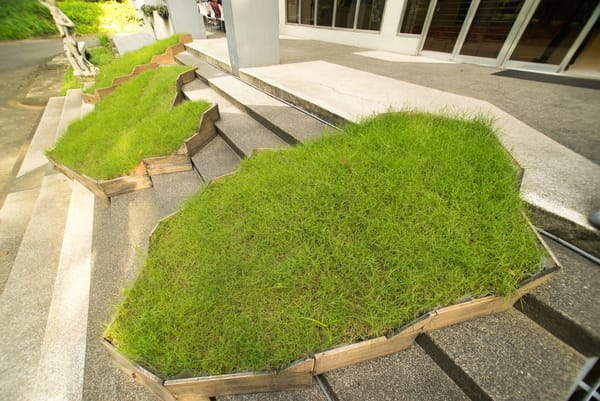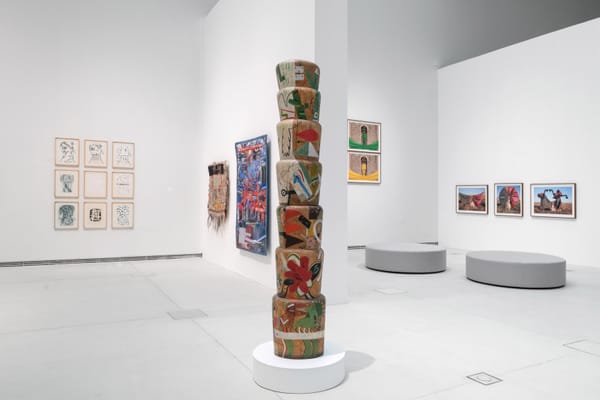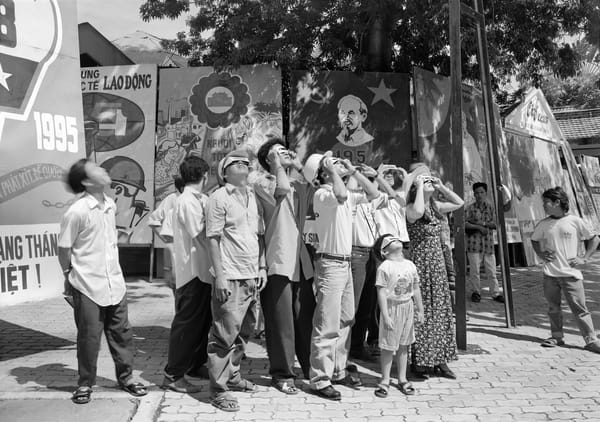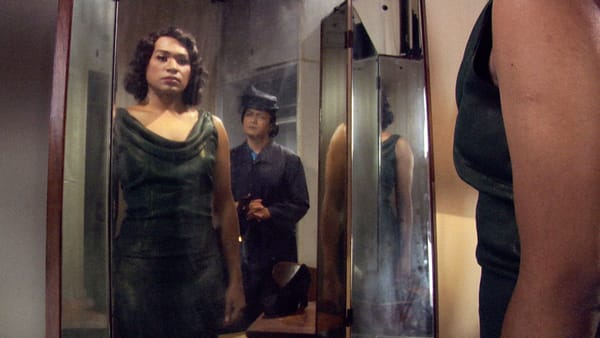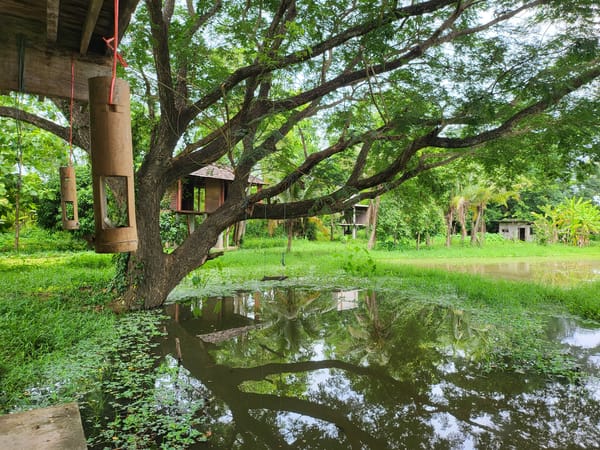Issue
Seoul: Pierre Huyghe: Liminal
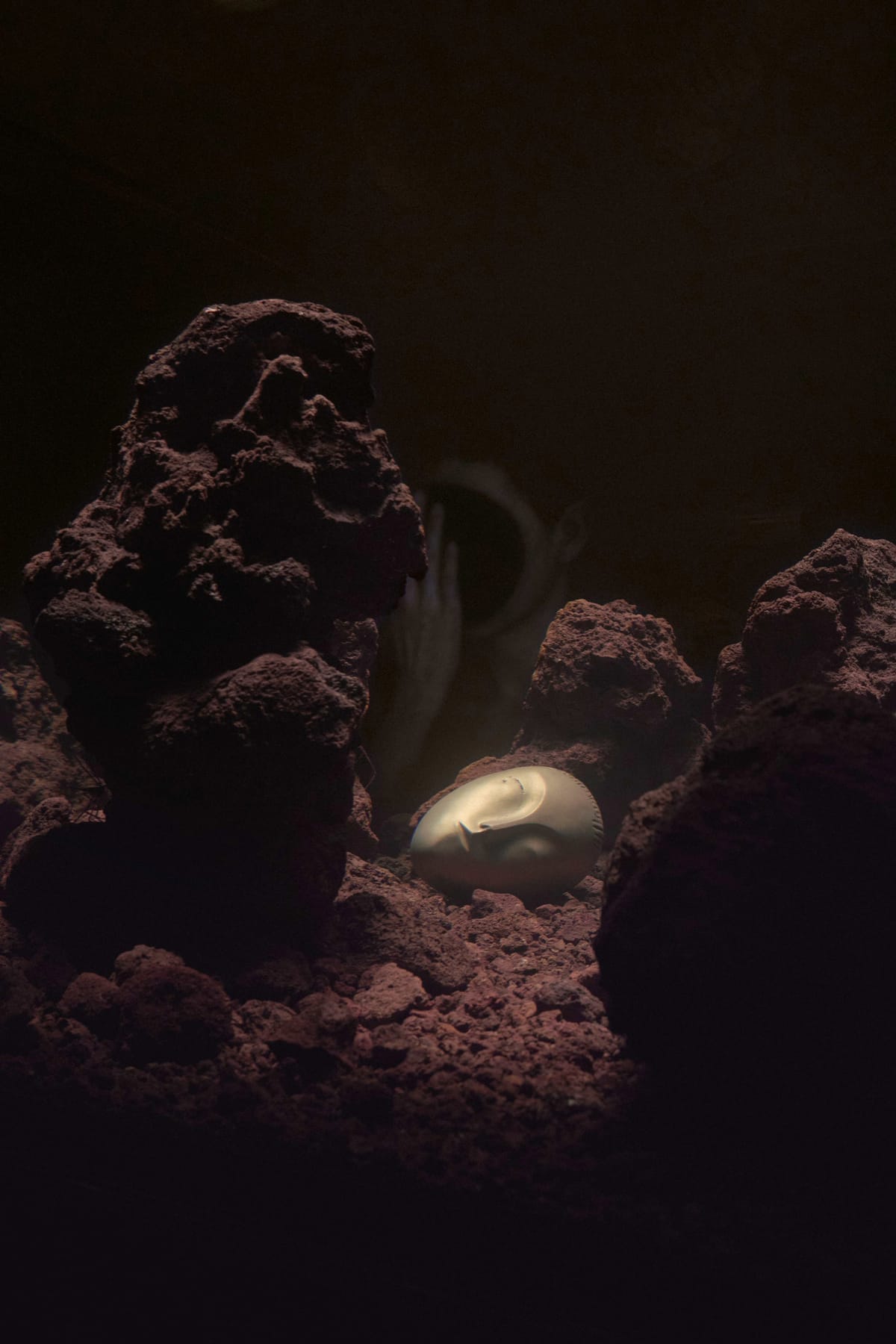
Pierre Huyghe
Liminal
Leeum Museum of Art
French multimedia artist Pierre Huyghe has teased Western art audiences for decades, repeatedly probing the nature of reality via puzzling environments and enigmatic hybrid artworks such as Untilled (Liegender Frauenakt) (2012), a reclining concrete female nude with an active beehive for a head. “Liminal,” which presented 12 works at the Leeum Museum of Art in Seoul, was his first solo exhibition in Asia. Spanning 2013–24, the selection originally appeared at the 60th Venice Biennale last year in an official collateral show, co-developed by the Pinault Collection and the Leeum Museum. At the Punta della Dogana, as in Korea, the artist’s preoccupation with the interface between the human and nonhuman prompted many questions, though not always the ones he intended.
Like Genesis, this survey—conceived by Huyghe in collaboration with independent curator Anne Stenne—began in darkness. Emerging first from the void, Zoodram 4 (2011) is an illuminated aquarium containing a hermit crab living inside a hollow replica of Constantin Brâncuși’s bronze sculpture Sleeping Muse (1910), the pair emblematic of Huyghe’s obsession with human artifice vis-à-vis the natural world.
Nearby, a looming film projection, Human Mask (2014), offered a more troubling scenario. We see the streets and buildings of an abandoned Japanese town, then the interior of a restaurant where a seemingly mutant creature (a simian body decked out with a black dress, long black hair, and a smoothly impassive human face not unlike that of Brâncuși’s muse) alternately bashes about the kitchen or waits silently by a window—for what, neither she nor her viewers can say. Only by consulting the annotated exhibition map do we learn that the setting is Fukushima after the 2011 nuclear accident. Ah yes, monstrous mutation has been a standard trope for the atomic threat ever since Godzilla rose from the sea in 1954. Huyghe’s contribution was to put an alluring onnamen (“female mask”) on a monkey.
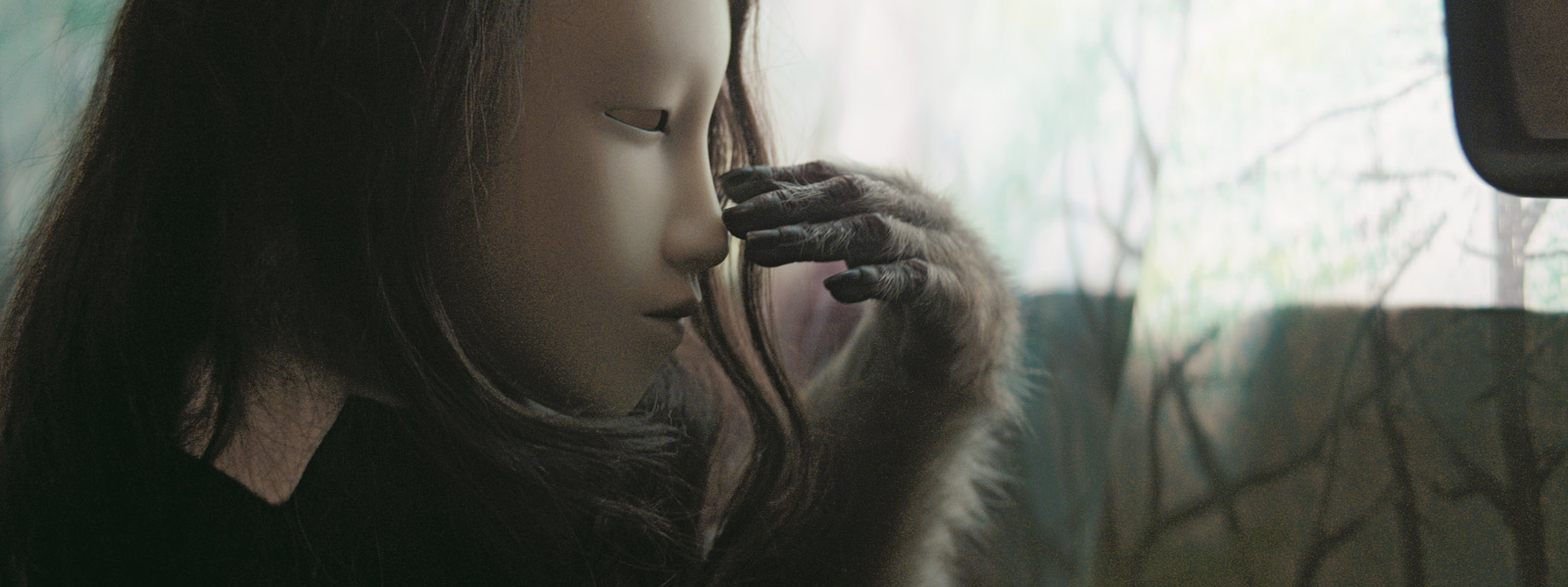
The issue of what viewers know about a particular piece, and how they know it, pervaded the exhibition. Does reading about a work count as an art experience? Conceptual artists would say sure; visual purists are not convinced. But apparently, given Huyghe’s long-term success at winning awards (the Hugo Boss Prize and many others), the art world’s gatekeepers enjoy this sort of baffling experience and the research it prompts.
The floor piece Estelarium (2024), a slab of rock with a reverse-dome indentation, was described as cast from the belly of a woman in full-term pregnancy. Offspring (2018), which looks like the output of a fog machine rendered portentous by a grid of pin lights, might remind visitors of the mystic 14th-century religious text The Cloud of Unknowing, which advocates misty faith over the clarity of reason: “We cannot think our way to God.” Huyghe’s piece, however, is endowed with ongoing shifts in sound, scent, and lighting not by a supreme deity but by ever-vigilant AI.
Most deceptive of all is the eponymous Liminal (2024– ). We may think we are watching a large-screen film in which a nude woman with a blacked-out face by turns lies still, thrashes, stands, and wanders on a moonlit shore. But the handout describes a “real-time simulation” that self-modifies in response to environmental stimuli picked up by sensors. Given that this is also what sensate creatures do, this technological work evokes a hazy border between human and animal, animal and machine: in short, the exhibition’s theme.
The more illuminated second half of the show—the sections were on separate floors at the Leeum—included two vivid embodiments of ontological blur. Mind’s Eye (S) (2022) is a thigh-high, multicolored glob of “synthetic and biological material.” Its configuration was derived from the show’s UUmwelt – Annlee (2018– ), an ever-changing composite image of facial features, supposedly generated by the brainwaves of people trying to visualize the fantasy figure Annlee. (Umwelt is German for an organism’s experience of its own environment.)
Huyghe, one of the founders of relational aesthetics, with its emphasis on socially inflected “encounters” rather than the solitary contemplation of art objects, is clearly operating on the now roughly 175-year-old principle of the avant-garde. Subject les bourgeois to one dose of strangeness after another until a few of them get shocked into a new vision, a new mode of being. Huyghe’s signature method, immersive installation, undoubtedly owes much to his training at the National School of Decorative Arts in Paris, but his sensibility is also cinematic. His projects, replete with bizarre scene-setting and transmogrified characters, call to mind films like The Island of Lost Souls (1932), Planet of the Apes (1968), and Jurassic Park (1993)—all of them heirs of Frankenstein (1931). Indeed, at moments, “Liminal” almost attained the sublime weirdness of Eraserhead (1977).
But was it all a huge put-on? Eight years ago at the Punta della Dogana, Damien Hirst staged “Treasures from the Wreck of the Unbelievable,” a winking, over-the-top display of fake classical artifacts and artworks, allegedly dredged up from an ancient shipwreck. By comparison, Huyghe’s cabinet of wonders seemed more earnest, but how could viewers really know that all the verbiage about sensors, exotic organisms, and AI was not an elaborate joke? And if the AI-directed editing of an artwork is no different from what a human might do, what is the point? Is it simply that artists are just as much at risk of being displaced by machine learning as insurance claims clerks?
Adding to this festival of uncertainty were yet more fish tanks. One, titled Circadian Dilemma (El Día del Ojo) (2017), samples two different fish species—one sighted, we are told, the other blind—occasionally subjected to a blackening of the aquarium’s glass, which disrupts the circadian rhythms of the seeing specimens, while leaving the others benighted but unfazed. The other tank, Cambrian Explosion 19 (2013), hosts small aquatic lifeforms that apparently originated 540 million years ago—all hovered over by a “floating rock” (though a more scatological reference might come to mind), a format reminiscent of Jeff Koons’s basketballs and Hirst’s deathless shark. Several performers strode silently through the exhibition, their heads encased in gold-hued helmets that supposedly fed data to the various digitally responsive works.
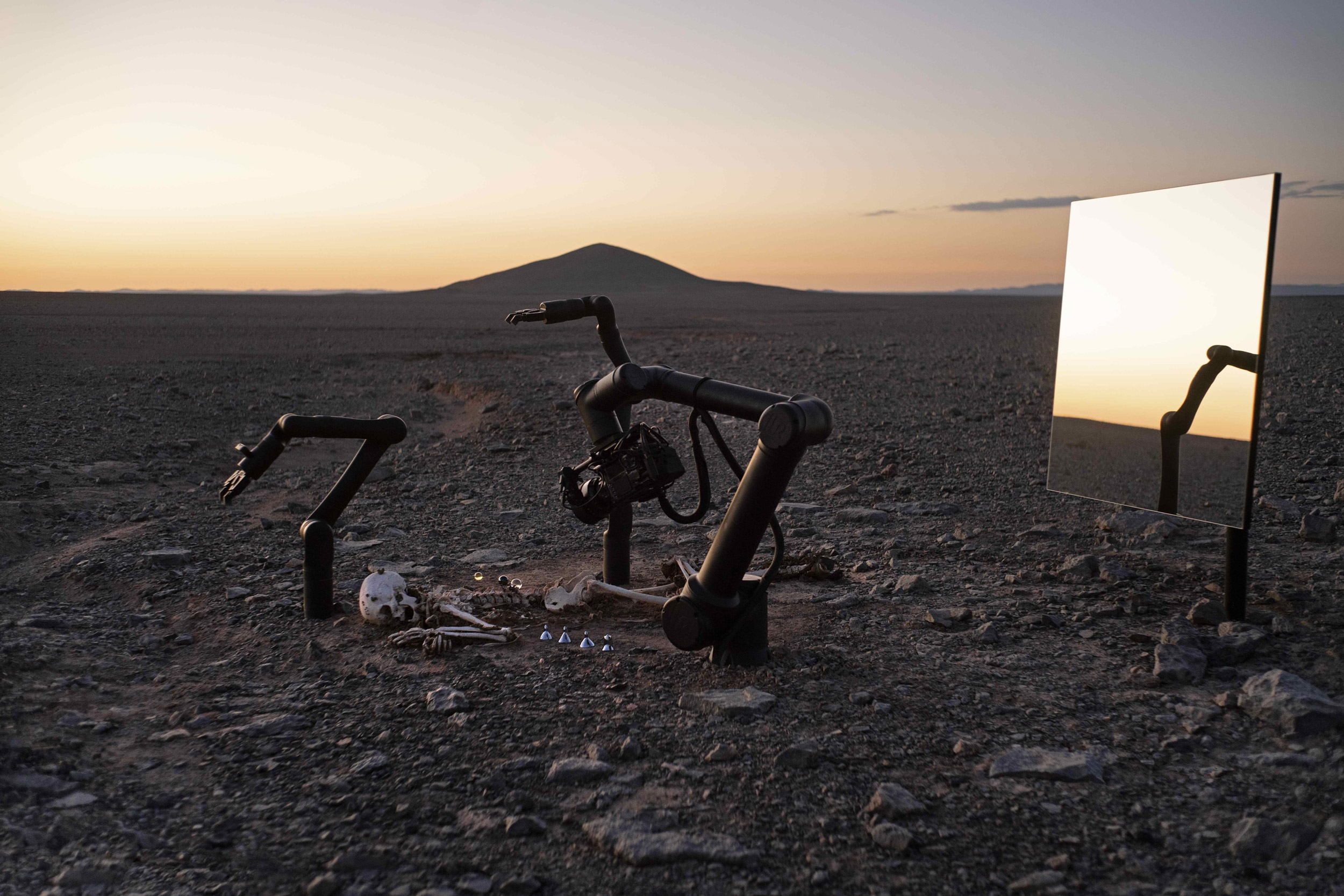
Were we in the post-Enlightenment world now? If so, Huyghe is quick to point out that empiricism and reason, too, have their limits. His most effective caveat is the film Camata (2024), set in the Atacama Desert of Chile, the country where he now resides. On the flat, stony ground with a pyramidal peak in the distance sits a strange apparatus comprising robotic arms, a camera, and a large plate mirror. The AI-directed appendages slowly, almost ritualistically, place small transparent spheres around a human skeleton, suggesting that our smart machines may one day bury us—once we, with their help, have utterly depleted Earth.
Thus, the viewer’s journey from Creation to post-apocalypse concluded. Along the way, we passed from one sideshow attraction to another, including that darling Monkey Girl. Arguably, the tour is an apt metaphor for the human condition. But what does the carnival teach us? Essentially, that we are mortal and, when it comes to life’s most profound questions, mentally adrift in the dark—as God, at Job’s expense, once admonished us. It’s a timely—and timeless— aesthetic reminder.

